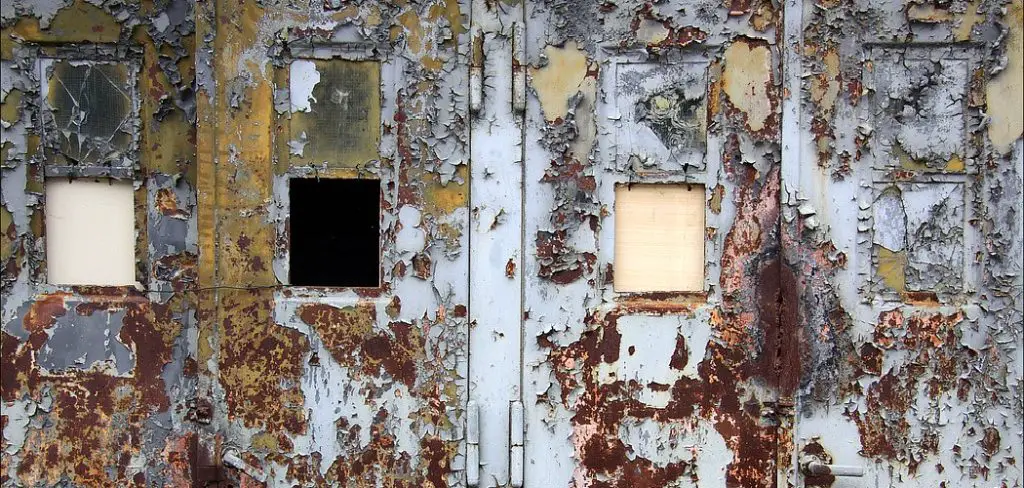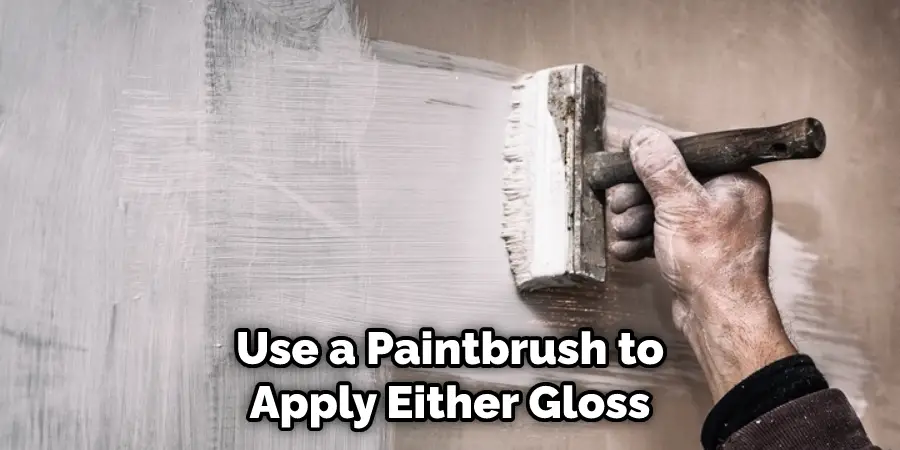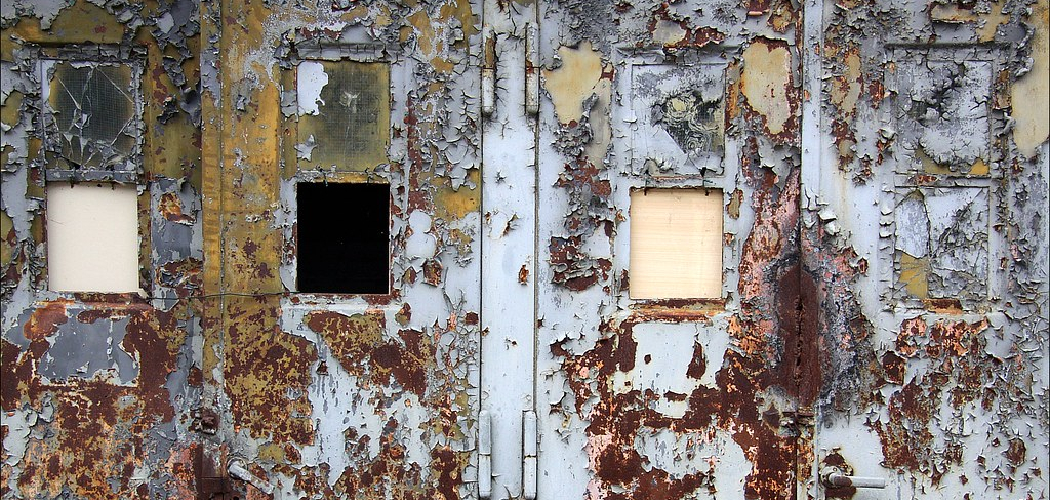Is your garage door looking worn and rusty? Does it stick every time you open or close it, leaving behind unsightly scrapes and chips on the metal surface? Don’t worry—you don’t need to replace the entire thing just yet. Although rust can be an eyesore, there are some simple steps that you can take to bring your garage door back to life! In this post, we will provide detailed instructions on how to repair garage door rust and any traces of corrosion that have formed over its lifetime. Read on for everything you need to know about restoring your home’s external beauty!

Why Rust Forms on Garage Doors?
Garage doors are made of metal, typically steel or aluminum, which is prone to rust when exposed to moisture and oxygen for extended periods. This means that if your garage door has been constantly exposed to rain, snow, and other weather elements, it is more likely to develop rust over time. Additionally, scratches or dents in the door’s surface can also expose the metal to moisture and accelerate the rusting process. Furthermore, garage doors located in coastal areas may be more susceptible to rust due to the high levels of saltwater in the air.
Can You Repair a Metal Garage Door?
Yes, it is possible to repair a metal garage door that has become rusty. Rust is caused by exposure to water and air, so it’s important to regularly check your garage door for any signs of corrosion. To repair metal garage doors with rust, you’ll need the following supplies:
- Sandpaper or Steel Wool
- Primer
- Paintbrush
- Rust Converter
- Gloss or Flat Paint.
First, you’ll need to sand down the affected area using either sandpaper or steel wool until all rust has been removed. Once you’ve done this, use a primer on the area to help seal it and provide a better surface for your paint to adhere to. Then, a rust converter will be applied to the affected area, which will help prevent further rust from forming. Finally, use a paintbrush to apply either gloss or flat paint to the area and finish off with a few top coats of paint.
Once you’re finished, your metal garage door should look as good as new! Regularly check for any signs of rust in order to keep your garage door from corroding further. With proper care and maintenance, you can extend the life of your metal garage door for years to come.
10 Methods How to Repair Garage Door Rust
1. Use a Rust Converter
Rust converters are products that chemically change rust into a stable compound that can then be painted over. This is the quickest and easiest way to deal with small areas of rust on your garage door. If the rust is extensive, you may need to sand it off with a wire brush and abrasive paper before using a rust converter.
You can find rust converters at most hardware stores and they come in spray or brush-on form. It’s important to follow the instructions on the product carefully and allow enough time for it to dry before painting over it.
2. Sand the Area
If you have a larger area of rust, you’ll need to sand it down before you can apply a rust converter or primer/paint. Use medium-grit sandpaper and sand the area until the rust is gone and the metal is smooth. You can even use an electric sander, if available. Be sure to wear safety goggles and a dust mask while sanding to protect against flying particles. Once finished, wipe away any dust or debris from the area.
The same process applies for steel wool, which can also be used to remove rust from metal surfaces. It’s a good idea to finish off with fine-grit sandpaper to smooth out the surface before moving on to primer and paint.
3. Apply a Primer
Once you’ve sanded down the rust, you’ll need to apply a primer before painting. This will help the paint to adhere better and will also provide an extra layer of protection against future rusting. Make sure to cover the entire area, including any exposed metal. Allow the primer to dry for several hours before moving on to the next step. Although this step is often overlooked, it is essential for maintaining the life of your garage door.
You can also use a rust-inhibiting primer for added protection against future rust formation. It’s important to choose a primer that is specifically made for metal surfaces.
4. Paint the Area
After applying a primer, you can then paint over the area with a color that matches your garage door. If you’re not sure what color to use, ask for help at your local hardware store. Ensure that you use paint designed for metal surfaces, such as oil-based enamel. Paint the rusted area in smooth strokes, working from left to right and then up and down. Apply a few thin coats, rather than one thick coat, of paint, as this will help ensure that the paint adheres properly and offers better protection against future rusting. Allow the paint to dry fully before continuing with other repairs.
The same process applies if you need to repaint your entire garage door due to extensive rusting. You can use a paint sprayer or roller for larger areas.
5. Use Rust-Oleum paint
Rust-Oleum makes a special paint that is specifically designed for use on metal surfaces that are prone to rusting. This might be a good option if you’re concerned about future rusting, as it will provide an extra layer of protection against it. Make sure you read the instructions on how to apply the paint, as it may require several coats for the best results. Once all of the paint has been applied, wait for it to dry completely before moving on to the next step.
But be careful while applying Rust-Oleum paint as it is very strong and can produce fumes. It’s a good idea to wear a mask while painting.
6. Apply WD-40
WD-40 is a product that can help to prevent rusting by creating a barrier between the metal and the air. Simply spray it on the affected area and then wipe it off with a clean cloth. You’ll need to reapply it every few months, but it can be helpful in preventing future rusting. Be sure to wear gloves when applying WD-40 and take care not to get it on your skin. It can be harmful if ingested, so keep it away from children and pets.
You can also use other lubricants such as silicone spray or motor oil in a similar manner to prevent rust formation.
7. Use Vinegar or Lemon Juice
Both vinegar and lemon juice are acidic, which means they can help to remove rust from metal surfaces. Simply apply either one to the affected area with a clean cloth and then scrub at the rust until it comes off. Once the rust is gone, wipe off any remaining liquid and then apply a coat of paint to protect the metal from further rusting.
Although this method can be effective, it may take several applications and some scrubbing before the rust is fully removed. It’s also important to clean off any residue from the vinegar or lemon juice to prevent further damage.
8. Use Baking Soda

Baking soda is a mild abrasive that can be used to remove rust from metal surfaces. Mix it with water to form a paste, then apply the paste to the affected area and scrub at the rust until it comes off. Once the rust has been removed, rinse off the paste with water and dry the garage door thoroughly to prevent further corrosion.
If necessary, follow up with a rust-proofing primer or paint to protect the metal from further damage. With regular maintenance, your garage door will remain rust-free for many years to come.
9. Use Borax or Table Salt
Borax and table salt can both be used to remove rust from metal surfaces. Simply mix either one with water or lemon juice to form a paste, then apply the paste to the affected area and scrub at the rust until it comes off. If necessary, you can use steel wool to help remove the rust. Once all of the rust has been removed, rinse off the paste with water and dry the area thoroughly. The paste should be reapplied and scrubbed off again until all of the rust is removed from the door. Repeat this process as many times as necessary until all of the rust is gone.
10. Use Steel Wool
Steel wool is an abrasive material that can be used to scrub off rust from metal surfaces. Simply gently rub the steel wool along the affected area until the rust is gone. Be sure to wear protective gloves when using steel wool, as it can be quite harsh on your skin.
If the rust is particularly tough to remove, you may want to use a steel brush instead. After removing the rust, apply some metal polish or wax in order to protect the surface from further corrosion.
Following these steps will help you remove rust from your garage door and keep it looking like new for years to come. Remember to regularly inspect and clean your garage door as part of your home maintenance routine to catch any signs of rust early on before it becomes a bigger problem. With proper care, you can extend the lifespan of your garage door and save money in the long run.
Can You Fix a Broken Garage Door?
If you’re dealing with issues such as rust, dents, or frays in the cables, you can look into garage door repair options. Rust is one of the most common issues with garage doors and can be caused by exposure to water, salt air, and other elements. To fix a rusty garage door, it’s important to start by cleaning off the rust using an appropriate rust remover or steel wool. After the rust has been removed, you can then use a primer and paint to seal the metal against further damage.
For more extensive damage, such as bent tracks, frayed cables, broken springs, or misaligned panels, it’s important to call in a professional garage door technician. They will be able to assess the extent of the damage and determine what repairs need to be done. They will also be able to provide advice for future maintenance in order to prevent further damage. Garage door repairs can be costly and time-consuming, but they can also help to ensure the safety of your home and family.
Tips: Regular Maintenance and Care for Your Garage Door
- Inspect your garage door regularly, looking for any signs of rust or damage.
- Keep the tracks and rollers clean and lubricated to prevent friction wear.
- Tighten any loose screws or bolts on a regular basis.
- Test the balance of your garage door by disconnecting the automatic opener and manually opening and closing it. If it doesn’t move smoothly, it may need to have the springs adjusted or replaced.
- Keep the weather-stripping around the garage door in good condition to prevent water and debris from getting inside.
- Don’t ignore any strange noises or issues with your garage door. Address them promptly before they become bigger problems.
- Consider using a rust-proofing primer and paint when repainting your garage door.
- Avoid using harsh chemicals or power washing on your garage door, as this can cause damage to the surface.
- Keep the area around your garage door clear of clutter and debris to prevent any potential hazards or obstructions.
By following these tips and properly maintaining your garage door, you can extend its lifespan and keep it looking great for years to come.
Frequently Asked Questions:
Q: Can a Garage Door With Rust Be Fixed?
A: Yes, it is possible to fix a rusty garage door. First, remove the rust using appropriate methods, such as vinegar or steel wool. Then, a primer and paint designed for metal surfaces should be applied to prevent future rusting. You can also use rust-proofing paint for extra protection. It’s important to regularly maintain and check for any signs of rust in order to prevent extensive damage. If the rust is severe or there are other issues with your garage door, it’s best to call a professional for repairs.
Q: How Can I Prevent My Garage Door From Rusting?
A: To prevent your garage door from rusting, it’s important to regularly check for any signs of rust and address them promptly. Additionally, applying a coat of wax or metal polish can provide extra protection against rust. You can also consider using a rust-proof primer or paint when painting your garage door for added prevention. Keeping the area around your garage door clean and free from debris can also help prevent rust. Regular maintenance is key in preventing any potential damage to your garage door.
Q: How Often Should I Inspect My Garage Door For Rust?
A: It’s important to inspect your garage door for rust at least twice a year. This will help catch any early signs of rust and prevent it from spreading further. However, if you live in an area with harsh weather conditions, such as salt air or high humidity, it may be beneficial to check more frequently.
Q: Can I Use Household Products to Remove Rust From My Garage Door?
A: Yes, you can use household products such as vinegar, lemon juice, baking soda, borax, table salt, and steel wool to remove rust from your garage door. These methods are effective and affordable options for removing rust without the need for harsh chemical cleaners. However, it is important to take proper precautions when using these products and always wear protective gear. If the rust is severe or you are unsure of how to safely remove it, it’s best to seek professional help.
Q: Can I Replace a Garage Door Panel That Is Rusting?
A: In most cases, it is possible to replace a rusting garage door panel. However, it’s important to consult with a professional technician first to determine the extent of the damage and if replacement is necessary. They will also be able to recommend the best course of action and provide an estimate for the cost of replacement. Regular maintenance and promptly addressing rust can help prevent the need for panel replacement in the future.
Conclusion:
If your garage door is starting to show signs of rust, don’t wait to address the issue. By taking care of trust early on, you can prevent it from doing serious damage to your garage door. With a little time and effort, you can repair garage door rust yourself. All you need is some sandpaper, primer, and paint. Follow the steps outlined in this blog post, and you’ll have your garage door looking good as new in no time!
We hope this guide on how to repair garage door rustwas helpful. Please share it with your friends on social media if you find it useful. And be sure to check back here soon for more informative guides like this one.

